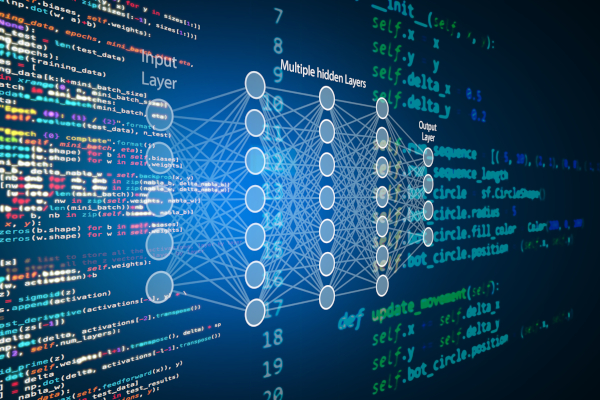Email communication is still the leading channel for direct contact with consumers. There are many examples of companies using this channel to successfully increase consumer engagement and turnover. However, running a campaign too aggressively can result in a decrease in the open rate and positive effects of emails. An overly conservative approach to using mailings can prevent the consumer base from realizing its full purchasing potential. As the number of products being sold increases, customer expectations become more exorbitant, and competition intensifies, optimal campaign planning becomes even more challenging. Fortunately, data science can help.
The recipe for success is simple. You have to send the maximum number of emails to the consumer, not more and not more often, however, than he can bear. You have to send messages to the consumer about potentially the most profitable products, but not ones that don’t interest him at all. Finally, you need to send messages at the right times, both in terms of the consumer’s preferences and the campaign calendar and the need to “spice up” sales. Well, and it would be good not to inform the customer about products he intends to buy anyway. The principles are cruelly simple. So why is their implementation in practice sometimes so difficult?
How to optimize marketing activities – an example
In seeking an answer to this question, we will use the following example, which is very simplified by necessity. A company sells three products A, B and C. Each of them will be the subject of campaigns that will be implemented during the 4-week period under consideration.
Product A will be promoted in week 23, product B will be promoted in all weeks, and product C will be promoted only in the last 24 weeks. Product C is the most profitable for the company – each unit is a 250 PLN margin. For product A and B, on the other hand, it is 100 and 50 PLN, respectively. The above information is summarized in the table.
| Product / Campaign week | 21 | 22 | 23 | 24 | Unit income |
| A | X | 100 | |||
| B | X | X | X | X | 50 |
| C | X | 250 |
Let’s also assume that the company has only 100 customers and each of them has a different preference for shipping frequency. For example, consumer No. 1 accepts a frequency of no more than once every 2 weeks. So a shipment to him can be made either in weeks 21 and 23 or in weeks 22 and 24. Consumer No. 2 is a bit more oversensitive about the frequency of communication and is already inclined to consider dispatches more frequent than once every 4 weeks as excessive spamming. A dispatch to him, therefore, can only be made in one of the 4 weeks, and so on.
Finally, let’s assume that our goal is to maximize the effect for the entire four-week period. And by effect, we mean the total additional sales generated by the campaign. We also assume that no more than one message can be sent to a given recipient in a single week. Thus, in weeks with more than one campaign, we must choose which one we will send. We also do not send more than one message regarding a given campaign to the same customer.
Even with such a modest base: 3 products, 4 weeks, 100 consumers, we have 24 x 3 x 100, or 4800 zero-one decisions to make whether or not to send a given customer a given campaign in a given week. We only need to add one more product and extend the period to 5 weeks and the number of decisions grows to 12800. If we wanted to optimize the calendar for a quarter (12 weeks) with the same number of products and customers we already reach 1638400 combinations. And yet hardly any company has only 100 customers and sells 4 products….
So we see that the number of decisions that need to be made is growing very rapidly. Even for such a small base, it is impossible to make so many decisions manually.
So what do we do in such a situation?
- Firstly, we can abandon optimization and send everyone everything always or choose randomly.
- Secondly, we can adopt an approximate method, which does not guarantee finding the optimal solution, but gives a chance to find a solution better than random. For example, for each consumer, let’s assign the most profitable campaigns sequentially. However, this intuitive way does not at all guarantee the maximum global effect. Perhaps, given all the constraints we have, for a given consumer it would be better to forgo sending the most profitable campaign and thus have the opportunity to send him two slightly less profitable ones, which, however, will bring higher profit overall.
- Thirdly, we can use mathematical programming and advanced optimization engines to find the best possible combination of shipments. It is worth knowing that about 85% of Fortune 500 companies use such methods in their business operations. Examples of the results that in the area of email campaign optimization were achieved with the implementation of such solutions:
- more than 30% increase in open rate (thanks to optimized frequency),
- more than 6-percent increase in the value of sales in the group targeted in an optimal way compared to the group targeted with simplified decision-making methods,
- nearly 50 percent savings in time and human resources when planning campaigns.
Finally, it is worth mentioning that in a world where we send text messages in addition to mailings and contact customers through other channels, the number of possible combinations of decisions is even greater. Therefore, the greater will be the benefits of mathematical optimization. We will also avoid a situation in which a manually arranged plan (which is not optimal anyway) will go awry when one campaign needs to be postponed “just by a week”, and due to problems with the supply of a certain product the volume of messages related to it needs to be reduced by 50%. The human planner will fail to modify the plan in time, or will quit overnight. A properly written mathematical optimization program will handle this task in minutes or hours. At the same time, it will allow to achieve the maximum campaign profit possible under the given conditions and constraints.




